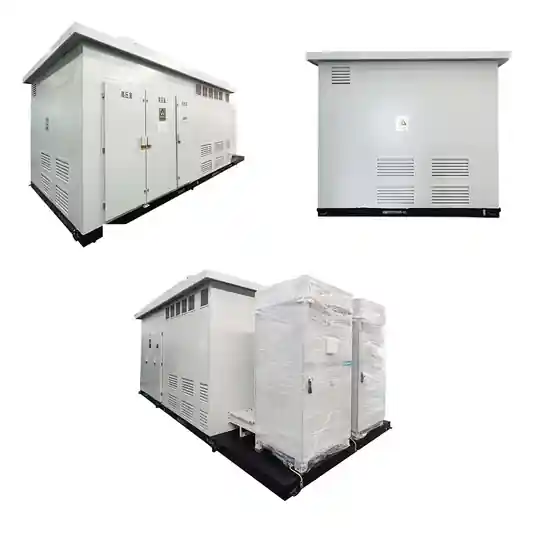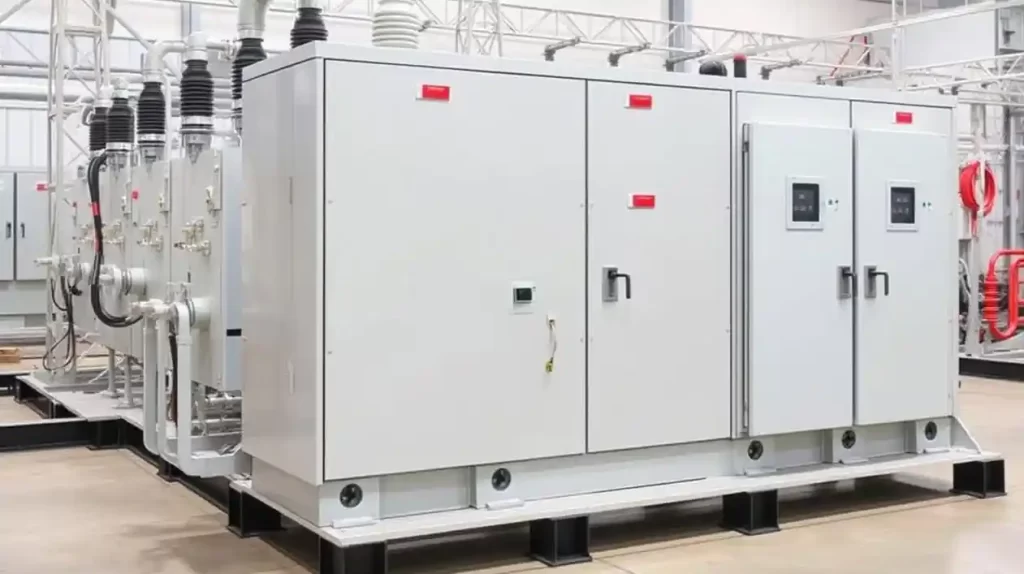Understanding the Core Concept
A MV to LV substation, also known as a medium voltage to low voltage transformer station, is a vital component in electrical distribution networks. Its primary role is to step down medium voltage (typically between 1kV and 36kV) to low voltage levels (400V or 230V) suitable for industrial, commercial, and residential consumption.
Substations of this type are used as the final transformation point in the power distribution system, delivering electricity in a usable form to end-users. These units consist of distribution transformers, low voltage switchgear, protection devices, and metering systems, all housed within a compact or modular enclosure.
Applications and Industry Usage
MV to LV substations are essential in:
- Urban and rural distribution networks
- Industrial manufacturing plants
- Commercial facilities such as shopping malls and office buildings
- Critical infrastructure: hospitals, airports, and data centers
- Renewable energy installations: solar and wind farms
These substations help maintain power quality and system stability by regulating voltage and ensuring safe fault protection.

Technical Overview and Key Components
A typical MV to LV substation includes:
- Medium Voltage Panel (11kV/22kV/33kV switchgear)
- Power Transformer (oil-immersed or dry-type, e.g., 1000kVA, 1600kVA)
- Low Voltage Distribution Board
- Control and Monitoring Equipment
- Enclosure (compact metal-clad or concrete housing)
These substations comply with IEC 62271, IEEE C57, and EN 50522 standards to ensure global operational safety and performance.
Common Ratings:
| Component | Specification |
|---|---|
| MV Input Voltage | 11kV / 22kV / 33kV |
| LV Output Voltage | 400V / 230V |
| Transformer Power | 400kVA – 2500kVA |
| Cooling Methods | ONAN (Oil Natural Air Natural), Dry-type |
| Enclosure | IP54–IP65 (Indoor/Outdoor) |
Why MV to LV Substations Are Crucial Today
With increasing demand for electricity due to urbanization and digitalization, the need for reliable power delivery is higher than ever. MV to LV substations serve as the last and most critical link between the utility grid and the consumer.
According to IEEMA, compact substations are gaining traction in smart city development due to their ease of installation, safety, and automation readiness. Reports from IEEE and Schneider Electric also highlight a growing demand for plug-and-play modular substations to serve rapid-deployment industrial zones and renewable projects.
Comparison with Other Substations
| Type | Voltage Levels | Typical Use | Size/Portability |
|---|---|---|---|
| MV to LV Substation | 11kV → 400V | Urban/industrial final distribution | Compact / Medium |
| HV to MV Substation | 110kV → 33kV | Transmission-level grid interconnection | Large & Fixed |
| Ring Main Unit (RMU) | 11kV – 33kV | Switching without transformation | Very compact |
| Pole-Mounted Transformer | 11kV → 400V | Rural/low-load applications | Lightweight/Outdoor-only |
Selection Tips for Buyers
When choosing an MV to LV substation, consider:
- Power capacity requirements (kVA rating)
- Site space limitations
- Environmental conditions (temperature, humidity)
- Protection needs (overvoltage, short circuit)
- Compliance with local standards (IEC, ANSI, CE)
Brands like ABB, Schneider Electric, Siemens, and PINEELE offer highly customizable solutions to meet varying infrastructure needs.

Buying Advice
If you’re in the market for MV to LV substations, seek vendors who offer:
- Custom engineering and layout design
- Factory-assembled and tested units
- Remote monitoring (SCADA compatibility)
- Post-installation support and maintenance packages
Purchasing from certified manufacturers ensures compliance with safety norms and long-term reliability.
FAQ: MV to LV Substations
A: When properly maintained, these substations can last 25–30 years or more. Factors such as ambient temperature, load variation, and environmental exposure influence longevity.
A: Absolutely. These substations are often used to step down voltage from solar or wind farm inverters for grid connection or localized distribution.
A: Yes, their reduced footprint, modular build, and safety features make them ideal for cities and space-constrained projects.
MV to LV substations form the backbone of modern power distribution systems. They bridge the gap between utility providers and end-users, ensuring safe, stable, and efficient power delivery. Whether supporting critical infrastructure or enabling smart city grids, these substations remain essential for sustainable energy networks.
To learn more about customized MV to LV substations for your project, contact PINEELE, your trusted partner in modern power solutions.